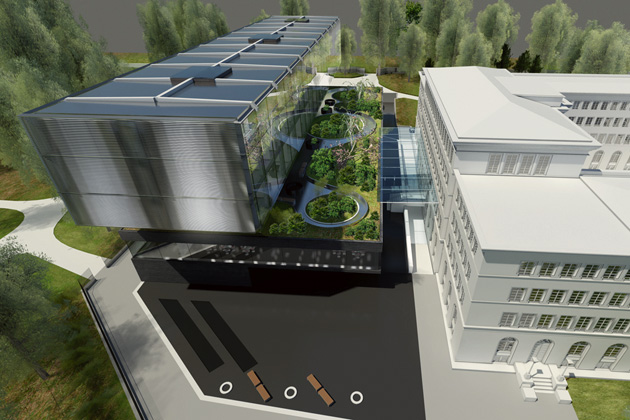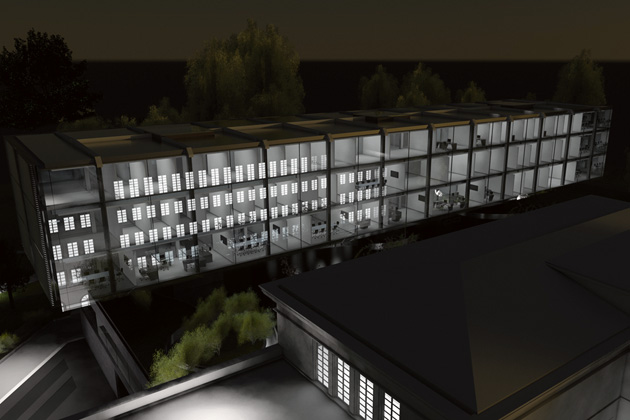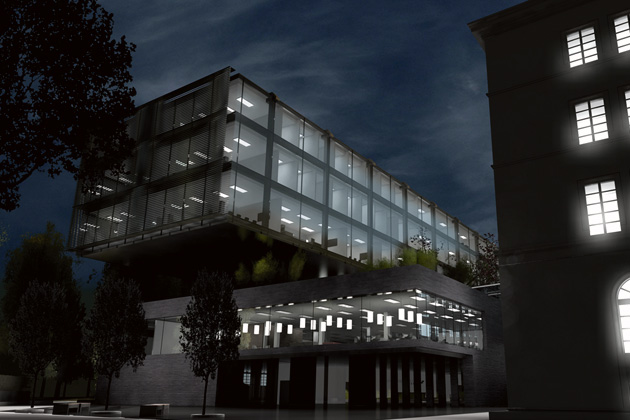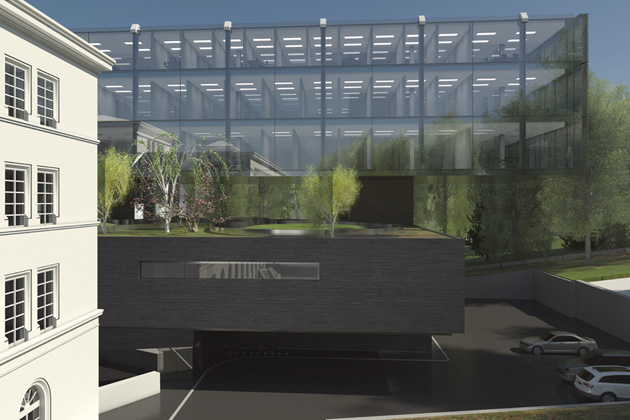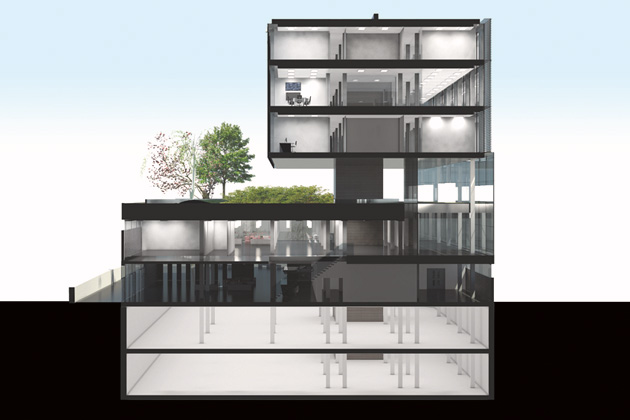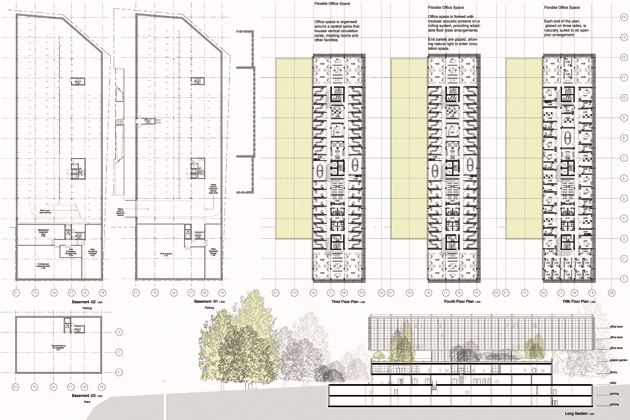The building takes its inspiration from its context, its location within the classic English Garden created by Sir Robert Peel in the middle of the 19th Century. The forest of giant sequoias, the only one in Geneva, provides a unique setting for the project. The project is conceived as a raised garden with a floating glass pavilion where people can work amidst the great tree canopies.
The proposal comprises of two simple forms. A solid lower block creates a raised garden. The roof garden is designed as a raised extension to the existing park. Above it hovers the second transparent block. The two blocks are linked by a double height winter garden that overlooks the historic park, Parc Barton.
The office block floats over the raised landscape and creates a comfortable and flexible working environment, surrounded by tree canopies, and a garden. It appears like a glass pavilion amidst a landscaped horizon. The lower block is clad in a light transmitting concrete. The first floor is like a traditional Piano Nobile and is linked to the existing building via a glazed bridge. It houses the collective facilities of Restaurant and Library. These are linked to the double-height winter garden that overlooks the parkland.
The upper block is supported from a spine structure. This allows its façade to be refined in its detailing and it appears to hover, like a luminous box, over the landscape amidst the great tree canopies. Internally it is dimensioned to allow a flexible and interchangeable plan arrangement, with standard acoustic panels on a 2.5m grid and sliding rail system.
On to all but the North façade of the glass form is attached a lightweight, undulating steel mesh designed to moderate the deleterious effects of direct sunlight while allowing views to the nature beyond.
